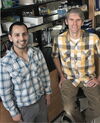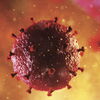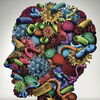2018-12-31
- We live in an environment characterized by a multitude of complex, diverse sounds. The ability to filter, select and understand specific sounds from this rich environment can impact learning, speech, and even our survival. Just imagine driving your car in heavy traffic while listening intently to a radio interview when, in the distance, you hear a siren. That sound will automatically and...
- 2018-12-31 - The Prasanths began a new life as postdoctoral researchers at Cold Spring Harbor Laboratory in New York. And today, as University of Illinois CDB professors, they continue to work side by side — literally. Their respective labs are next to each other in the Chemical and Life Sciences Building, where they probe the mysteries of DNA replication and gene expression.
- 2018-12-31 - When Neal Kitchen joined the department of cell and developmental biology in 2002, his plan was to get a PhD and then find a job with a company that would pay for an MBA program. But just as he neared graduation, the financial crisis of 2007-2008 took the wind out of the job market. “There were a lot of companies that simply weren’t hiring much,” he said, “so I...
- 2018-12-31 - CDB graduate students wanted to open a discussion about career opportunities, particularly outside of academia. They formed a group that included students and postdocs in the summer of 2017, and to date, the group has hosted three alumni with very different and fascinating career paths.
- 2018-12-31 - The Meads made a $1 million contribution this year for graduate scholarships and an endowed chair in Molecular and Integrative Physiology.
- 2018-12-31 - It is rare to fall in love with a field during college, pursue it, and build a stellar career. Yet, that’s what John Cronan’s life has always been about- fatty acids.
- 2018-12-31 - Although oxidative stress is a chronic problem, life endures. To understand how oxidative stress damages cells and what their defense mechanisms are, the Imlay lab uses E. coli as a model organism.
- 2018-12-31 - Researchers report in a new study that the bacterium Helicobacter pylori – a major contributor to gastritis, ulcers and stomach cancer – resists the body’s immune defenses by shutting down energy production within the cells of the stomach lining that serve as a barrier to infection.
- 2018-12-31 - MCB Collaboration Unravels Bacteria’s Virulence Regulation System
- 2018-12-31 - The Brooke lab is home to post-doctoral fellows, undergraduates and graduate students who are working to understand how influenza adapts and transmits. Two of the lab’s key areas of research are genomic diversity—that is, variation in flu particles on the genetic level—and collective interactions between flu particles during the process of infection.
- 2018-12-31 - Influenza is one of the most adaptable viruses known to man. By tracking down flu’s weak spots, Christopher Brooke’s lab hopes to aid in the development of new treatments.
- 2018-12-31 - Staphylococcus aureus is on the “most wanted list” for the National Institutes of Health, making it a major villain in the microbial world, said Robert B. Gennis, an MCB biochemistry professor. S. aureus also happens to be on the most wanted list in the lab of Thomas Kehl-Fie, MCB professor of microbiology.That’s why Kehl-Fie and Gennis have teamed up, along with research scientist...
- 2018-12-31 - Jeremiah Heredia was the first student to join the Procko lab three- and-a-half years ago. Now, the fourth-year biochemistry Ph.D. candidate is an integral member of the group’s research team. Heredia spends most of his time analyzing the interactions between different conformations, or shapes, of the HIV-1 envelope protein (Env) and the antibodies in the immune system.
- 2018-12-31 - The Procko lab applies big data tools to molecular biochemistry.Their goal: a better understanding of how we might fight HIV-1.
- 2018-12-31 - “Between the realms of agriculture, nature, and humans, the unifying factor is the microbes that exist in each and the specific genes those microbes carry.The IGOH theme at the IGB allows research to be contextualized, and to exist in a space where lab work becomes immediately relevant and applicable to the rest of the world,” she said.











